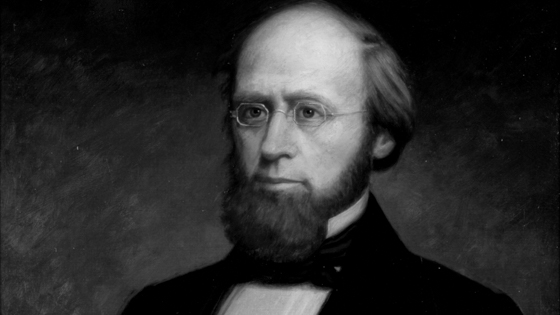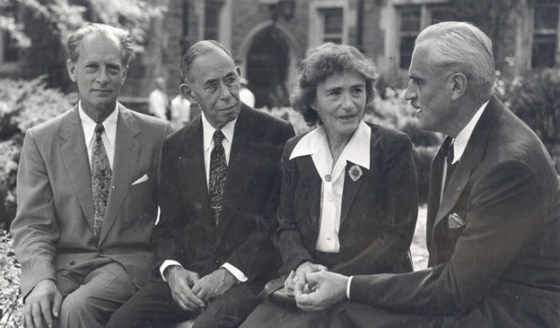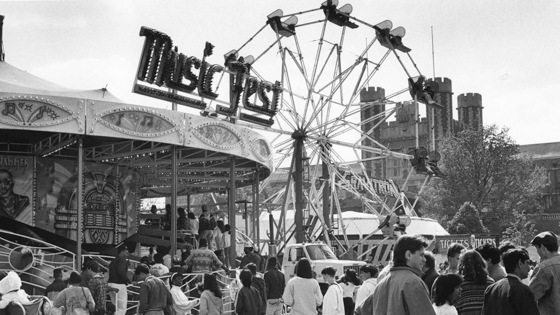In the early 1850s, 17 prominent St. Louis business, religious, and political leaders saw the need for a Midwestern institute for higher learning. However, though they all were successful in their fields, none of them had experience in the business of establishing and growing a university.
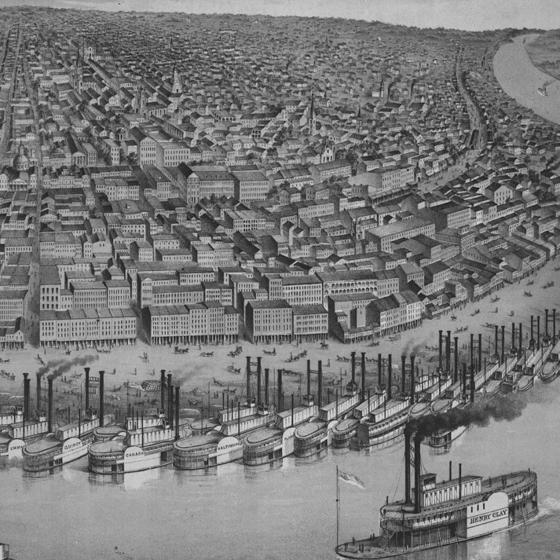
St. Louis, the geographical centre, not only of this valley, but of the whole country, will be, to a fearful extent, responsible for the intellectual and moral character which shall be impressed upon the American people. It was in view of considerations like these that a few far-sighted and large-hearted men…laid the foundation of Washington University.
Joseph Gibson Hoyt, 1st chancellor at his inaugural address, Oct. 4, 1859
On February 22, 1853, one of these men — State Senator Wayman Crow — saw an opportunity to act on their vision and drafted a charter for an “Eliot Seminary” for the governor. The charter was signed into law the same day, effectively establishing the seminary. This action had not been discussed with the others and was a surprise to all, including William Greenleaf Eliot Jr., the St. Louis Unitarian minister after whom Crow had named the institute.
Nevertheless, under Eliot’s leadership, the men took their charge seriously and set about to build a university.
One of Eliot’s first actions was to change the institution’s name to Washington University to free it from any implied sectarianism or personal self-interest. Eliot insisted that Washington University remain forever nonsectarian and politically nonpartisan.
Without a prior endowment or backing by a religious or political group, or a single wealthy donor, Washington University’s growth was small at first. Evening classes for local St. Louisans offered the university’s first big successes.
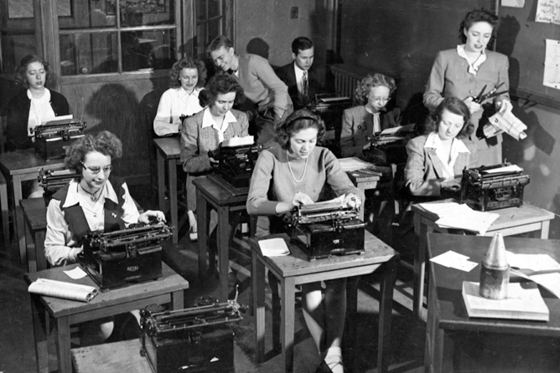
Private institutions, not partisan, not sectarian, not political, not beholden to party or creed, are needed now more than ever in our history to guard without fear of favor a knowledge without bias, and the complete privilege of the search for and the expression of truth. The compelling picture of this responsibility cannot be overdrawn. In a world oppressed by intolerance, by partyism, and other constricting pressures, a free institution is indeed a rock in a weary land.
George R. Throop, 8th chancellor, May 1941
What began as a modest venture to address a need in the Midwest is now an internationally renowned university focused on teaching, learning, research, service, and patient care.
Today, while proud to continue offering evening classes for local St. Louisans, WashU’s nine schools serve 17,000 undergraduate and graduate/professional students who come from more than 100 countries and all 50 states.
WashU is an R-1 private research institution whose faculty and staff brought in over $950 million in research funding in 2022. WashU’s School of Medicine represents 78 specialties at 60+ clinical sites through WashU Physicians, one of the largest academic clinical practices in the nation.
I have a vision of a great university. Its structures are grand and its surroundings are beautiful. The public esteem it, because its high aims, its great utility, its magnificent results are known. To support it is considered a duty, to aid in its development a pleasure, and to have one’s name connected with it an honor.
Winfield Scott Chaplin, 4th chancellor at his inaugural address, Jan. 11, 1892
For more information about the history of WashU, please explore the 300+ unique collections in the University Archives.
WashU History FAQs
WashU is in St. Louis, Missouri.
We are sometimes confused with the University of Washington located in Washington state and George Washington University located in Washington, D.C., given our similar names.
WashU is named for George Washington, the first president of the United States, because:
- The university’s charter was (by a historical coincidence) passed on Washington’s birthday: February 22, 1853.
- The trustees saw Washington as an important symbol and a uniting figure in the pre-Civil War United States.
The words “in St. Louis” were added to the university’s name in 1976 to better distinguish the institution in the national conversation.
The three stars and two horizontal bands are part of George Washington’s coat of arms and also represent the stars and stripes of the American flag. The three fleurs-de-lis at the bottom of the crest symbolize King Louis IX of France, after whom the city of St. Louis is named. The open book represents a university. The university’s motto appears across the pages of the book: Per Veritatem Vis, “Strength through Truth.”
Originally developed in 1896 by Holmes Smith, professor of drawing and history of art, the shield has undergone two notable redesigns, the most recent of which was in 2023.
Per veritatem vis; or “Strength through truth” was adopted as the university’s motto in 1915.
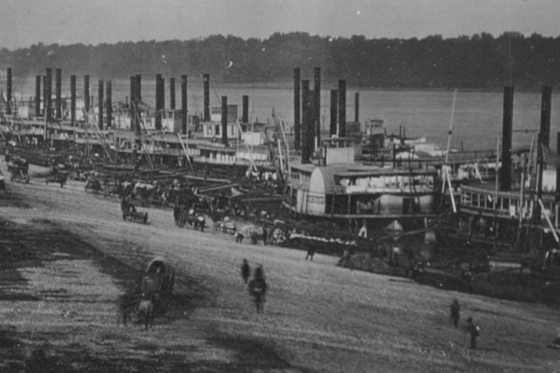
WashU and Slavery
There has been little consideration of WashU’s entanglements with histories and legacies of slavery. This is beginning to change. In Spring 2021, WashU joined Universities Studying Slavery (USS), the global consortium of colleges, universities, libraries, and other academic institutions examining and addressing relationships between our institutions and the history and legacy of slavery.
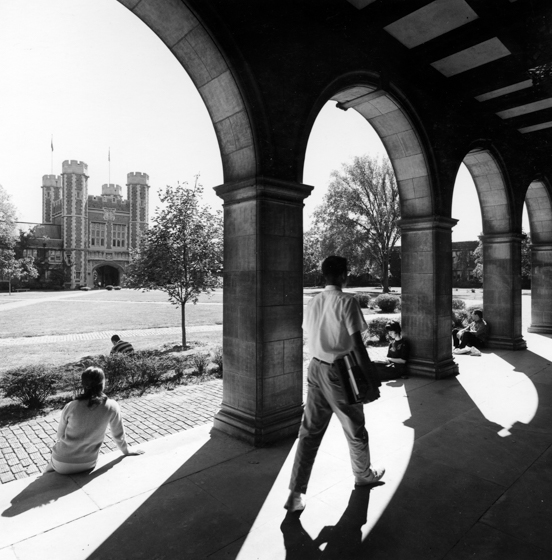
I want to say one reassuring word. The University still stands. It stands; and as it always has, it stands for the unterrified and unconfined search for truth… As we gird to protect our beloved institution from the felonies of a few, we must also protect the freedom of the many — professors and students alike — to dissent, to criticize, to engage in the intellectual controversy, to work together with minds unfettered and unafraid.
Thomas H. Eliot, 12th chancellor, in his Founder’s Day remarks, Feb. 28, 1970
